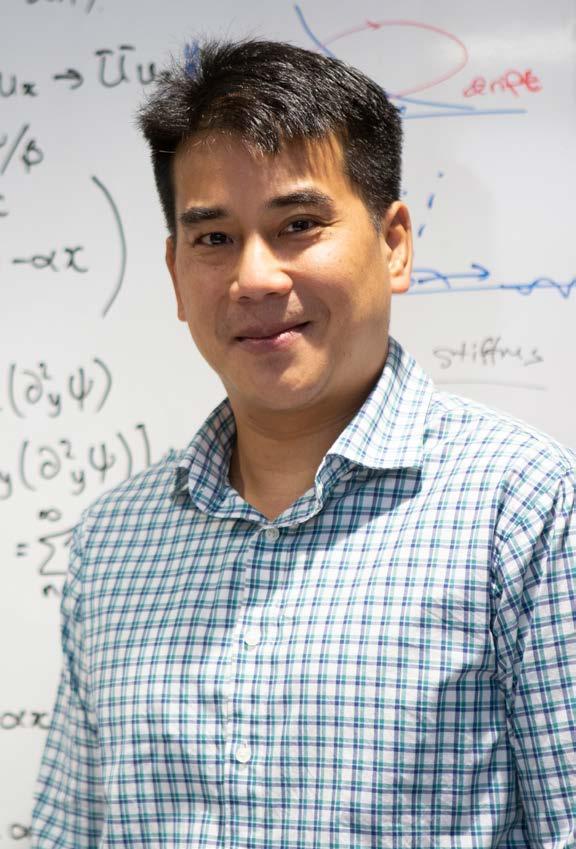
3 minute read
INDUSTRY NEWS: The Power of Sound Waves Making Noise with New Research
Source: Sally Wood
The possibilities for sound wave technology are constantly being realised, with major advances being made through RMIT research.
High-frequency sound waves, inaudible to the human ear, are being used in myriad applications, from building advanced materials to nanoscopic drug delivery. After 10 years of research, Distinguished Professor Leslie Yeo, and his team at the Micro and Nanophysics Research Laboratory, say they are only scratching the surface of understanding this technology’s full potential. “We keep discovering new phenomena – mostly by accident,” Yeo said. “This is because no one has been crazy enough to couple high-frequency sound waves into fluids and materials – we’re one of the very few groups in the world doing this work.” “In addition to building practical technology, we want to advance fundamental scientific knowledge as a foundation upon which we can better design devices,” Yeo continued. Yeo and his team explore sound waves at high frequencies, above 10 MHz. With low frequency sound waves, sonochemical reactions are driven by the violent implosion of air bubbles – a process known as cavitation. But at higher frequencies, cavitation is largely absent, indicating there is a completely new and unknown mechanism behind the reactions. The sound waves are generated on a microchip, to precisely manipulate fluids or materials at nano scale – down to atoms and molecules. Since beginning the research, Yeo said his team has had to challenge a number of classical physics theories, at least when it comes to explaining what they see. “We have developed theories that have been controversial, such as how fluids behave when vibrated from beneath by the sound waves,” Yeo said. “There are long-held classical theories, from the mid-1800s, on how these waves should behave, but these theories just don’t explain what we see.”
Yeo and his team at the Micro and Nanophysics Research Laboratory.
The team’s recent foray into vibrating nanomaterials and crystals, with these sound waves, is equally intriguing. It is especially puzzling that the sound energy, with wavelengths of hundreds of micrometres, can manipulate entities such as atoms or molecules, which are almost a million times smaller. Beyond fundamental discoveries, Yeo’s team is also translating the technology for practical benefit. Using their sound wave technology, they have designed a revolutionary nebuliser, called ‘Respite’, that can administer precise doses of the next generation of drugs, such as immunotherapies, to patients with debilitating lung conditions. ‘Respite’ is cheaper, faster, more portable, and has greater delivery rates than standard nebulisers. But more importantly, it can deliver large molecules – something current nebulisers cannot do. This opens the potential to painlessly administer vaccines. Not only is Respite painless, it is also more effective than standard nebulisers. Respite is able to deliver more drugs into the lungs by using sound waves to generate a fine aerosol mist containing the drug molecules. “The problem with conventional inhalers is that most of the drug is deposited in the mouth and doesn’t actually get to the lungs, which isn’t a problem if the drugs are cheap, but it is when they are very expensive, such as the new immunotherapy drugs,” Yeo said. “Unlike one-size-fits-all inhalers, Respite allows the dose to be adjusted based on
‘Respite’ generating a fine mist containing larger molecules.

a patient’s size, age, gender, physiological profile and disease severity, thereby allowing a greater percentage of the drug to get into the lungs.” “Also, Respite doesn’t require inhalation to generate the mist, like traditional inhalers, which can be a problem for people already suffering compromised lung function,” Yeo explained. The nebuliser has been successfully tested in clinical trials, and showed it is capable of delivering more medicine, more quickly to the lungs. Discussions are well advanced with an industry partner for the commercialisation of the Respite nebuliser, with hopes it could be on the market within two years.











